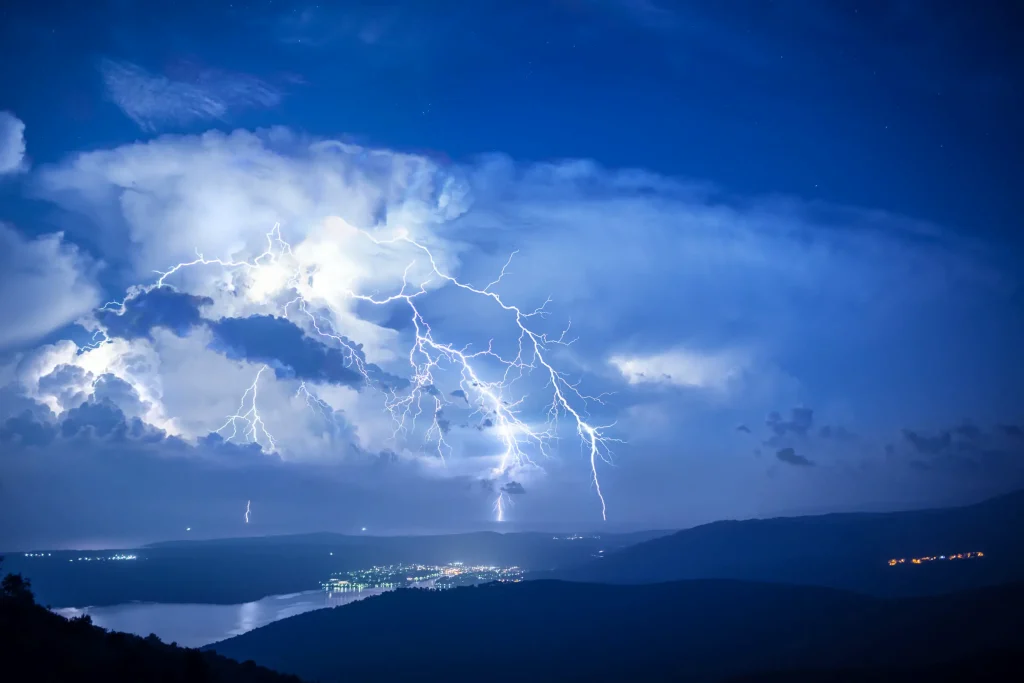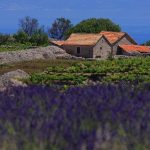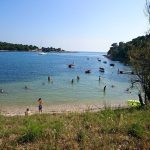A holiday in Croatia usually conjures up images of crystal clear waters, beautiful beaches and dining on open terraces. You know what? This is usually true. Many guests come to Croatia during the summer and thoroughly enjoy the warm Mediterranean climate. Still, regardless of when you make your way to Croatia, one thing you can never count on completely is the weather. So what to do when it rains in Croatia?
- Welcome to your rainy Croatian holiday!
- What is the Weather Like in Croatia Year Round?
- How Much Does It Rain in Croatia?
- What to Do on a Rainy Day in Dubrovnik?
- 5 Thing to do in Split when It’s Raining
- Hvar Rain is Rare, but it Happens. Here’s What to Do!
- Rainy Day on your Zagreb Holiday? Here’s How to Make the Best of It!
- How to Survive a Rainy Day in Rijeka?
- It’s Raining in Istria! What do I do?
Welcome to Your Rainy Croatian Holiday
What is the Weather Like in Croatia Year Round?
The Croatian climate is overall very pleasant. In fact, the coast especially is a part of the Mediterranean climate area with long, dry summers and mild, rainy winters. The continental part of Croatia has a typical continental European climate with cold winters and regular instances of snow. Around the higher elevated areas like Gorski Kotar region winter weather can be particularly harsh. All along the coast, especially between Zadar and Rijeka, the northern wind called Bura can be especially hard and disruptive.
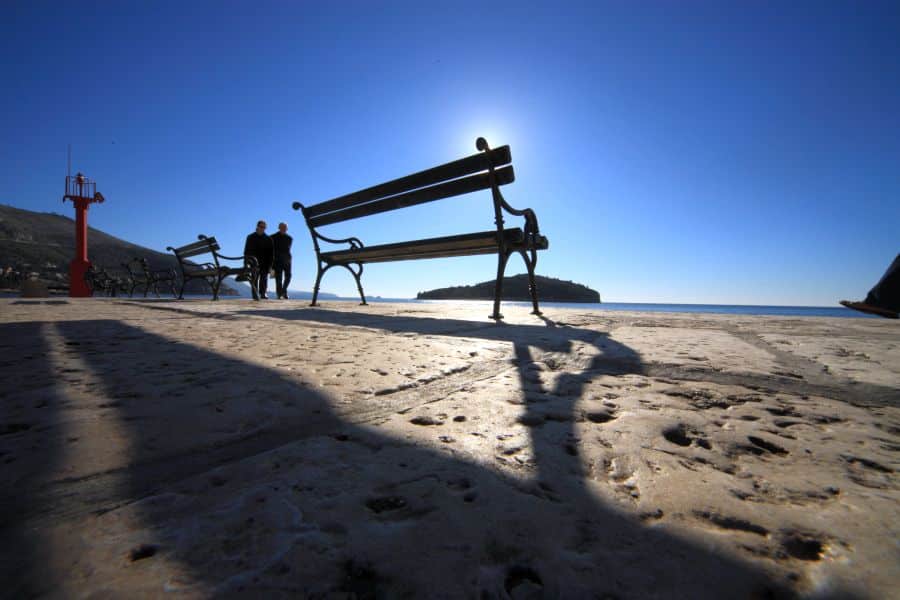
Throughout the summer and shoulder months the coastal areas are generally very warm and pleasant. In some instances the temperatures rise so much the news encourages people to avoid prolonged exposure to the sun during the hottest parts of the day. However, the summer weather is mostly very warm and inviting.
For more information about the weather, turn to Total Croatia News’ page on weather in croatia.
You can find current weather information on Croatian Meteorological and Hidrological Service website.
How Much Does It Rain in Croatia?
The amount of precipitation varies widely between regions and even micro locations. Islands far off the coast are the driest with the least amount of rain. For example, Lastovo island had 514,7mm of rainfall in 2020. Korcula town on the island of the same name had 895,9mm in the same year. The island of Krk, much further north than the previous two, had 1288,2mm. The situation varies drastically, but there is no particular place on Croatian coast that is especially rainy during the summer. Interestingly, out of all major Dalmatian cities: Dubrovnik, Split, Sibenik and Zadar, Dubrovnik is the rainiest even though it is the furthest one south. In 2020 Dubrovnik had as much rain as did the continental capital city of Zagreb.
Exact statistical information is available here.
What to Do on a Rainy Day in Dubrovnik?
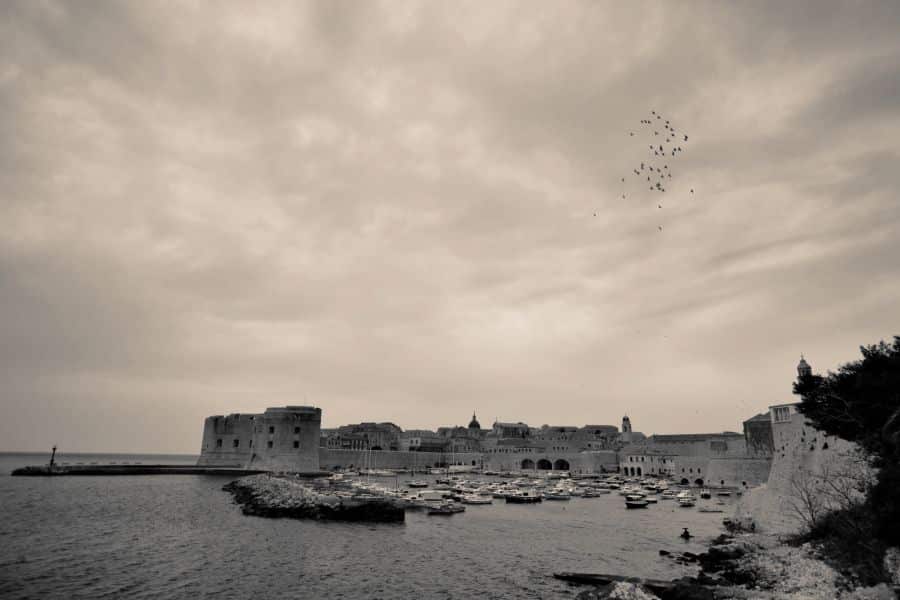
We know. You saw the brochures full of photos of sunny beaches and tanned people frolicking in the shallows. Now you’re here and it is starting to rain in the middle of July! This is a rare occurrence, but let’s be honest, that is hardly comforting in this situation. While many people react to rain on their summer vacation dramatically, the reality is you can still have a great time exploring the city and the surrounding area. Forget the beach or boat tours and try some of these.
Dubrovnik’s Old Town
The historical centre of Dubrovnik is very small, so if you are staying within the Old Town you will have plenty of indoor options. Many of the city’s museums are within the walls. Anyone even remotely interested in history and the story of the city will be able to spend hours exploring them.
Museums not your thing? No problem. Small shops and jewellery stores are dotted all around the city’s narrow streets. Hopping around these spots, searching for a perfect keepsake or gifts for the family might be the best choice for a rainy day. Take your time with it. This might be one vacation that doesn’t end with hectic last minute shopping two hours before the flight.
Plenty of small or big art pieces are also up for grabs in Dubrovnik’s galleries, often managed by the artists themselves. Enjoy some cultural uplifting by checking out the city’s rich arts and craft scene.
Restaurants and bars will also be popular on a rainy day. In fact, they can get completely overcrowded in the case of an unexpected rain, so think twice about them. If we are talking about a grey rainy day with stubborn rain, then restaurants might be a great option for a long lunch or dinner where you can really relax and enjoy. Remember to make a reservation as most places have very limited seating inside.
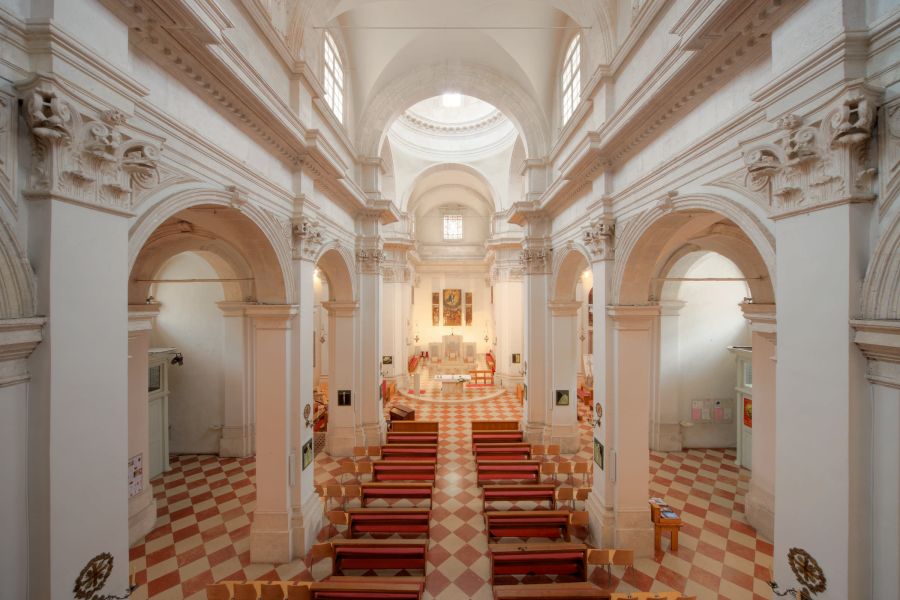
Dubrovnik Outside of the City Walls
Newer parts of Dubrovnik have their own amenities to offer during a rainy day. Similar to the historical centre, there will be plenty of restaurants and bars that are good hiding places for when the rain comes.
There are some museums and galleries outside of the Old Town, but there are more large shops. Several small shopping areas are unfortunately not a good substitute for a proper shopping centre which doesn’t exist within the city, but there are quite a few shops to go through. Gruz area has the biggest concentration of shops in the city. Outside the city, there is a small shopping centre in Zupa Dubrovacka area, called Sub City. It is too small to make it worth the trip just for the shopping, but it might be if you combine it with a beautiful local area with some nice cafés and restaurants.
Wellness and spa centres await in the majority of Dubrovnik’s hotels and they provide for a fantastic option on a rainy day. Who wouldn’t want to relax in a nice pool or get a soothing massage while the rain drops tap on the window? Some spas will have feature views of the surrounding area to really enjoy the ambiance. Others, like Sun Gardens Spa will offer enough amenities to turn the visit into a day trip.
There are many other options within Dubrovnik including gym, sports, escape room, cinemas and similar.
Dubrovnik Day Trips
Speaking of day trips, some are perfect for a rainy day. Popular day trips that take you to surrounding countries like Montenegro or Bosnia and Herzegovina might be a way to avoid the rain almost completely. If Dubrovnik is rainy, but the destinations on these tours are not, you might want to escape the rain and use the day to explore the surrounding area.
Some tours like many food and wine tours will take you to places where majority of the activities are indoors. Tours taking you to many museums are also generally ok to do during a rainy day. Of course, if the rain is light, you can to majority of the tours on offer with proper clothes and shoes.
5 Thing to do in Split when It’s Raining
Split truly is beautiful in all kinds of weather. The ancient city of Roman pedigree is getting to be one of the most popular destinations lately, for a reason. Along with being a historical city, Split is also the biggest Dalmatian city. Meaning, there is plenty to do in Split, even if you can’t go to the beach.
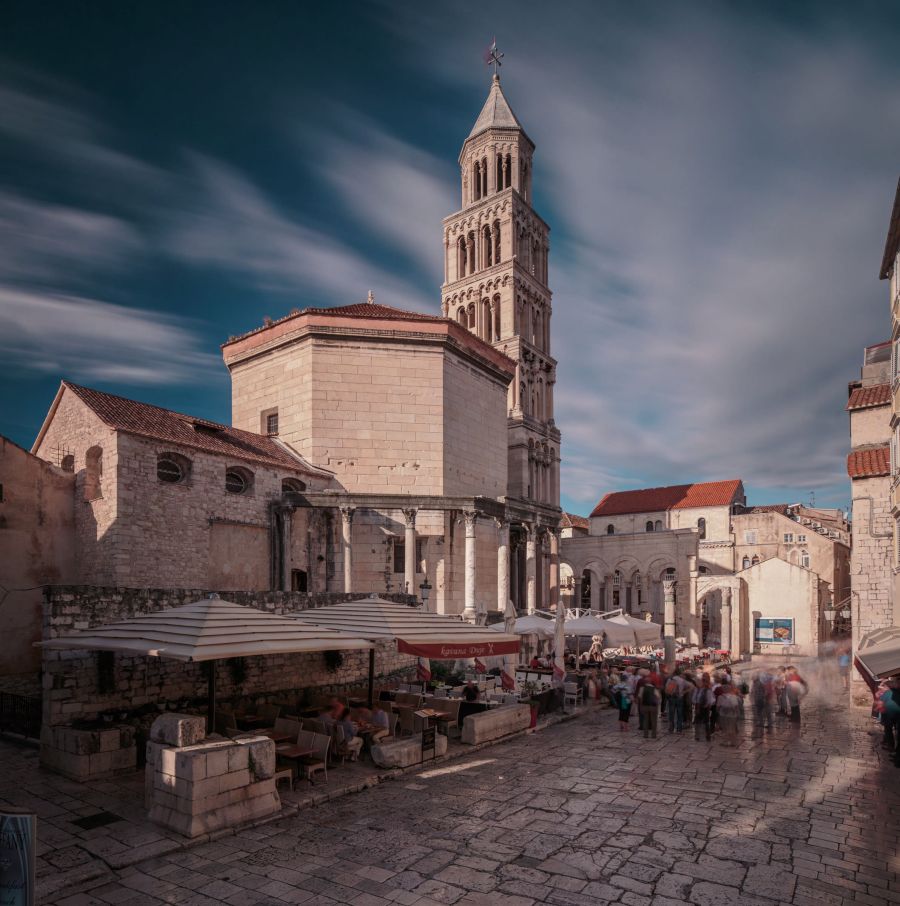
1. Get Lost Shopping
Unlike Dubrovnik, Split has several larger shopping malls. From Joker through City Centre One to local favourite – Mall of Split. While the rain beats down, enjoy the everlasting classic of shopping and entertainment. Shopping malls around the world provide rescue for people stuck outside during a rainy day. A visit to the mall doesn’t necessarily mean spending a fortune. It can be just cheap fun with a good roof over your head. Familiar brands of apparel, cosmetics and electronics help make you feel at home. Of course, there is no visit to the mall without enjoying the offer of cafes and restaurants inside.
2. Museum Hopping
Split in nice weather is quite a deterrent for museums. The city is very much at its best outdoors and it will make you want to spend the day doing nothing but catching fresh air. However, that doesn’t mean there are no museums that are worth your attention. For example, a good combination might be to visit Archeological Museum and Museum of Croatian Archeological Monuments. You can start exploring with local Roman history and continue with Slavic history of Split. Another great combo is to do Museum of Croatian Archeological Monuments and Mestrovic Gallery (Ivan Mestrovic – the most important Croatian sculptor) as their buildings are situated quite close to each other. If the weather does clear, you can enjoy lovely outdoor areas of these museums.
3. Visit Old Cinemas in the Historical Centre
There are two cinemas in the historical centre of Split – Zlatna Vrata and Kino Karaman. Their programs mix classic and modern movies from all over the world. One thing that many foreign visitors to Croatia don’t know coming into the country is our cinemas show movies with original soundtracks and subtitles rather than dubbing over. This means you can still watch most of the foreign films in the original language in local movie theatres. Tickets in the historical centre cinemas are cheaper than in the bigger cinemas in shopping centers. Before or after the film, it is easy to move to one of the nearby restaurants or bars.
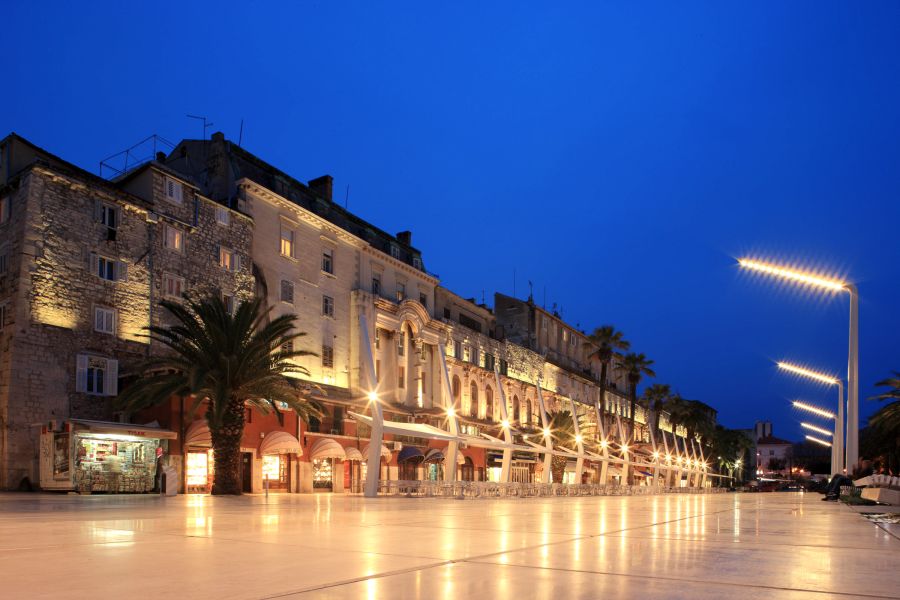
4. Visit a Winery or a Countryside Eatery Outside of Split
Local countryside eateries, farms and wineries might be a bit more fun to visit on a rainy day than a regular restaurant in the city. They offer nice food, amazing ambiance, and a story worth experiencing. To get to them you have to travel to the suburbs of Split or surrounding towns. In places like Kastela and Solin you can find a few great wineries perfect for wine enthusiasts. After all, this is the birthplace of zinfandel. All over the area, like in Zrnovnica or Klis you will find farms and countryside estates that cater to guests. This is a great opportunity to taste some traditional Croatian cuisine. If the skies clear, you’ll be a few steps from discovering the beauty of the local surroundings.
5. Cancel Your Walk on Marjan and Take it Easy
Marjan park-forest is must-see place in Split. Meanwhile, to be honest, a walk (hike) on Marjan seems a bit tiring. Amind the relaxed atmosphere of Split, it seems like a counter-intuitive activity. 314 steps are not easy to do for anyone. Therefore, it can be especially rewarding to cancel an activity like that while on your holiday. Hey, you have a valid reason. Go on, postpone your run or hike, find yourself a nice cafe and enjoy the Dalmatian philosophy of taking it slow known as pomalo.
Hvar Rain is Rare, but it Happens. Here’s What to Do!
Hvar is known as the “sunniest island in Europe”. Still, that doesn’t mean it doesn’t get rain. While all those looking for fun in the sun and beach hopping will be disappointed, all is not lost. With the island full of picturesque villages and towns perfect for exploring, there’s always something to do. We take a closer look at the options with emphasis on Hvar Town.
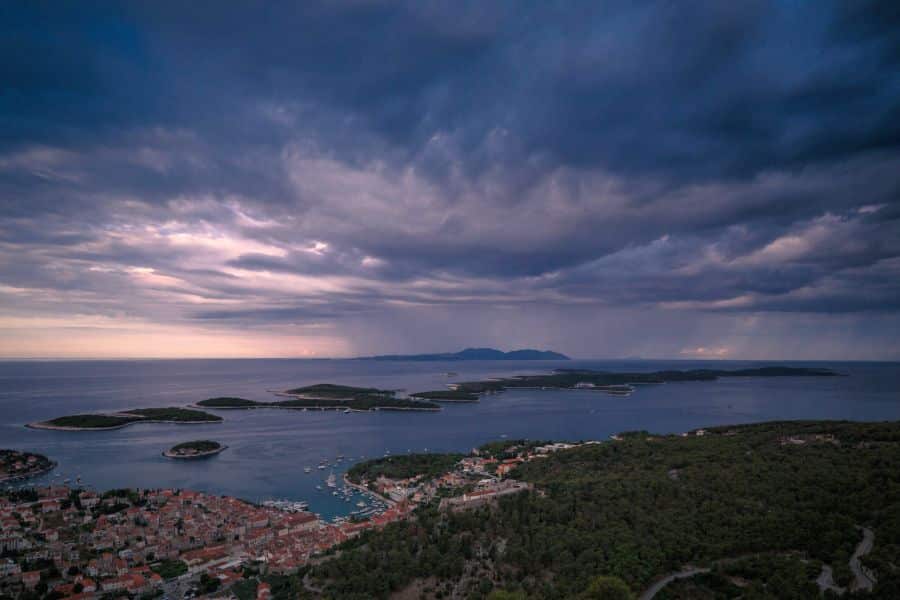
Restaurants and Cafés
You’ll oftentimes notice when it’s raining out that the cafes will usually be filled with people. One reason is to seek shelter from the rain, the other is to meet friends, drink, and be jolly. One thing that is particularly great about restaurants or cafes in the rain is that it brings people together, forces them to communicate, and most likely encourages a drink or two. You’ll be more inclined to meet people this way, including locals, and we can assure you that you’ll hear a good story or two.
Visit Art Galleries and Museums
Whether you remain in Hvar town to flock the various art galleries or museums in the town (be sure to check the opening times or call), it’s also wise to consider other galleries on the island. Stari Grad is just a short bus ride away from Hvar town, and the Stari Grad Museum is surely not one to be missed.
Island Shopping
What better way to enjoy a rainy day than to shop the alleyways of Hvar town? Sure, you’ll need an umbrella handy, but we think shopping in a bit cooler and crisper air prohibits better shopping decisions. Hvar town is filled with boutiques and especially creative jewellery shops – you will be sure to find one of a kind pieces here (and won’t be filled with sweat when you’re trying them on).
Take a Hike
The hot summer heat usually hinders you from doing outdoors activities other than swimming, but the Hvar town Fortica, aka Tvrđava Španjola, is great to take advantage of during a bit of rain. Although the sky won’t be as blue for your photos, we promise you the effort and dedication it takes you to get up there will be cut in half – an essential tourist site to see under a bit of cooler weather.
Pamper Yourself
If you’re in a position to do so, book a spa day. Hvar has many great hotels with spas that offer massages and beauty treatments. You can even just use the sauna to warm up if you need! A good way to kill time while the rain passes, a bit of pampering never hurt anyone.
Sure Hvar is the place to go to for the ultimate summer holiday, but don’t let a little bit of rain kill your buzz. Embrace the architecture, enjoy that warm cup of coffee (or brandy), admire the churches and the art and try to explore as much as you can. Even book a spa day if you’re up for it! We promise you Hvar town in the rain isn’t such a buzzkill after all.
Rainy Day on your Zagreb Holiday? Here’s How to Make the Best of It!
You have just planned out a perfect getaway to the capital of Croatia, but then you see that the weather forecast predicts rain. Does it mean you should cancel your plans? Absolutely not. Here are 5 suggestions of what to in Zagreb (even if) when it rains.
Guided tours of the Croatian National Theatre in Zagreb (HNK) with the HNK actors
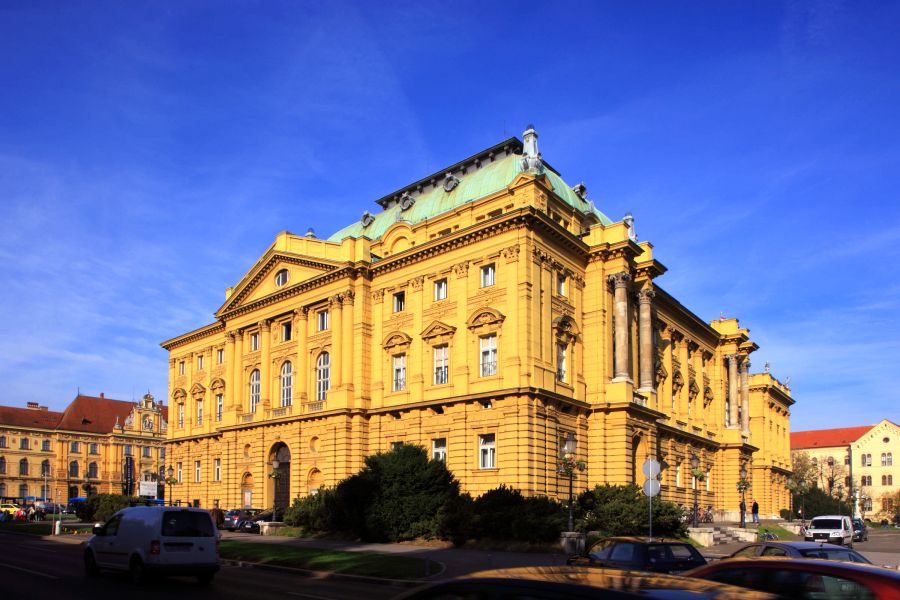
Under the motto ‘Meet HNK’, The Croatian National Theatre organises guided tours of different locations within the theatre which the audience normally doesn’t get to see. Walk through the underground passages connecting the Croatian National Theatre with the Academy of Dramatic Arts, sit in the emperor’s loge, visit the dance halls for a chance to catch a glimpse of HNK’s best ballet performers or admire the sumptuously decorated restroom built for the visit of the Austrian emperor Franz Joseph.
You can choose between two types of tours. ‘The Secret History of the Croatian Theatre’, which is available two times a month, takes place on Saturdays from 11 p.m. to 3 p.m. It would be a good idea to make a reservation before 2 p.m. on Friday. Alternatively, if you find yourself in Zagreb in the middle of the week, you can still take part in The Sightseeing Tour which takes place every day from 10 a.m. to 7 p.m., Saturdays from 10 a.m. to 3 p.m. Tickets are available at the ticket counter of the theatre.
Shopping
Use a rainy day to shop for unique souvenirs (like Licitar Hearts or the English edition of the first Croatian novel – The Goldsmiths’s Treasure – to remind you of your Zagreb adventures or go and buy a piece of Croatian jewellery just for yourself. Two usual shopping destination in the city center are Ilica, Tomićeva Street or Teslina Street.
If you would like to go where the locals go, consider visiting one of Zagreb’s shopping centres like Centar Cvjetni situated a stone’s throw from the main square or branch out and go to City Centar One or Arena Centar, located a little further away from the bustling city center.
Zagreb museums
Zagreb is a busy city 365 days a year, and its museums host many interesting and unusual exhibitions. If you are want to explore the history of chocolate there is the Museum of Chocolate – including an edible chocolate ticket. Museum of Illusions will challenge all of your senses. For classical arts visit Klovicevi dvori Art Gallery. For modern art make your way to the Museum of Modern Art. You will enjoy a unique glimpse into the psychology of relationships in Museum of Broken Relationships, and you will learn about Croatian crafts in the Museum of Arts and Crafts. With all this and more, you are certain to find something for yourself.
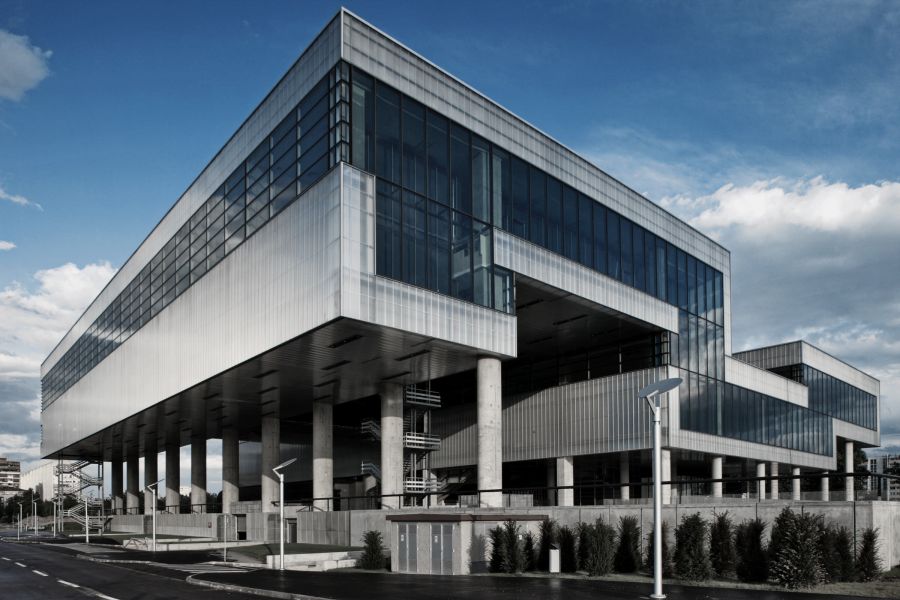
Cooking class or food tours
There’s nothing like improving your mood with some tasty Croatian food! Whether you are an amateur cook or just a traditional food enthusiast, Zagreb has been a meeting point and a melting pot of various cultures for more than two centuries. All of them have brought unique food traditions to the table (literally).
Beauty and spa treatments
Take a leaf out of Audrey Hepburn’s book, and just like her character in ‘Roman Holiday’ treat yourself to a new haircut, a massage or a facial treratment in one of Zagreb’s many beauty salons and spa centers, all staying atop of the latest trends!
How to Survive a Rainy Day in Rijeka?
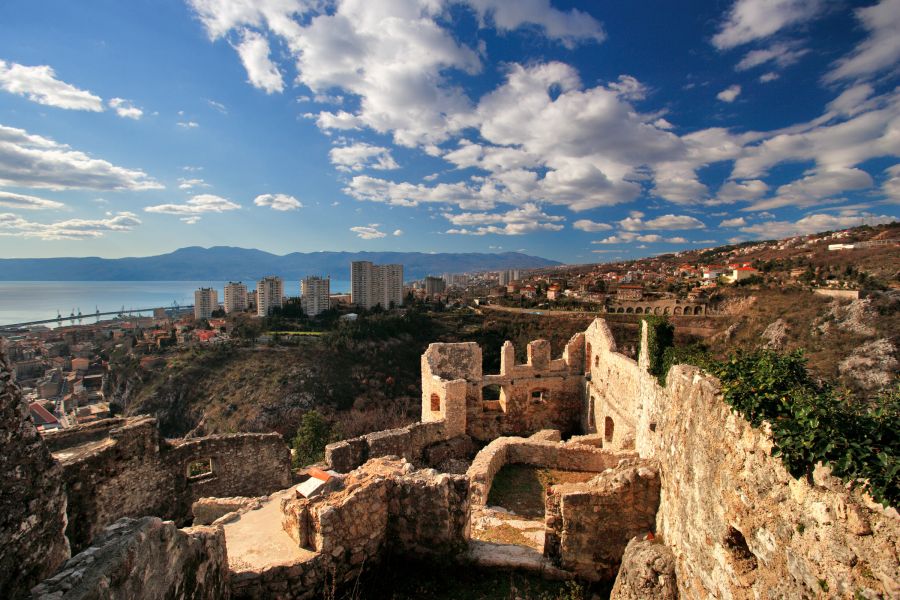
Rijeka is known as the „City that Flows“ in Croatia. This is, of course, a reference to the city’s name which translates to „River“. While the name itself has nothing to do with the amount of precipitation the area gets, Rijeka gets the most rain out of all the entries on this list. Rain suits this city of industrial charm and rock & roll spirit. It doesn’t seem to need sunshine to be interesting. To prove this, here’s a few ideas on things to do in Rijeka during a rainy day.
Peek & Poke Computer Museum
Museums are impossible to avoid on lists of things perfect to do on a rainy day. Museums provide pleasant and often uplifting content that gets more interesting the more time you devote to it. To top it all up, they are often in interesting or beautiful buildings. But sometimes it is not about fancy buildings, works of inspiring art or historically important items. Sometimes museums are just fun. This is exactly what Peek & Poke Museum is. It is informative and fun with a dash of nostalgia thrown in for good measure. Two story computer technology museum in Rijeka is full of bsolete computer technology. It offers a charming look into a part of the history many who visit have actually lived through.
Seeing how you can actually play with some of the exhibits, this place is a must-visit for all those wishing to remind themselves of how fast the world turns.
Visit the Governor’s Palace
On the opposite end of the scale from Peek & Poke is the Governor’s Palace. This is an experience of classical architecture and classical museum values. This late 19th century neo-renaissance building houses two museums, Maritime and History Museum of the Croatian Littoral. Exhibits are numerous and diverse and will take you quite a bit of time to go over in detail. Interesting collection of model ships are a real eye candy. The history of the building itself is fascinating and worth exploring as well. Governor’s Palace is a must-visit place when in Rijeka, regardless of the weather.
Get Creative with Rainy Day Photography
We weren’t kidding when we said rain suits Rijeka. The city simply looks cool when it’s raining. Unlike many coastal cities in Croatia, Rijeka still feels like the industrial centre it was and still partially is. Lead skies, rising winds and feeling of cold drizzle on your cheeks are unpleasant to some, but to artistic souls they are an invitation to create. Photography lovers will find great spots in Rijeka to immortalise on a gloomy day. For example Torpedo Factory – a symbol of glorious past of Rijeka. Today it sits in disrepair, abandoned and endlessly interesting. If you are after something more aesthetically pleasing you can’t go wrong with the main street Korzo and the historical buildings around it. Get creative and make sure your camera doesn’t get too wet.
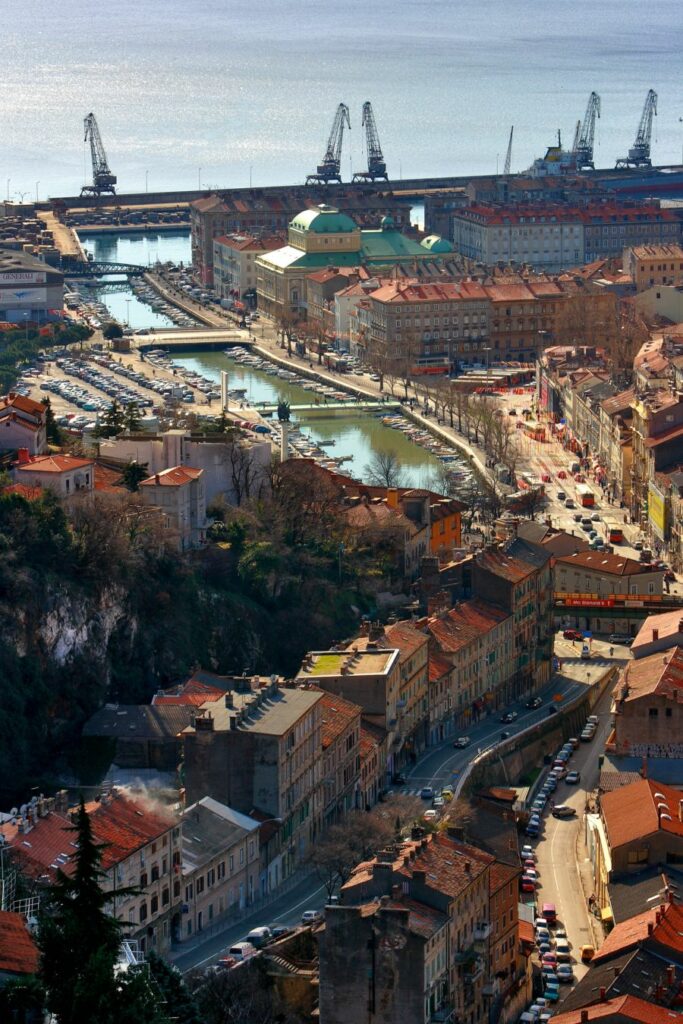
Cafés & Bars
Rijeka is known for interesting cafés, bars and pubs. Rainy day might just be a perfect opportunity to check out the local scene. From carefully decorated spots offering the latest and greatest craft beer to old classics of Rijeka’s drinking scene, there is something for everyone in the „City that Flows“. Make sure to do your homework and get informed about the places that suit your style. Even better, don’t do any research and let yourself be surprised and thrown outside of your comfort zone. Some of the names to remember are Brasserie AS, King’s Pub, CukariKafè, Kavana Grad and The Beertija. Cheers!
Catch a Performance in Croatian National Theatre „Ivan Pl. Zajc“
The National Theatre in Rijeka is an important institution of the city. It sits in the city centre in a beautiful building designed by a Viennese design studio in 1880s. More important than the building are the performances that go on inside. Amazing theatre plays, operas and ballet performances are all on the calendar of Rijeka’s Croatian National Theatre. If you are facing a rainy day during your stay in Rijeka make sure to check what’s on in the theatre and enjoy the show. It just might be an opportunity for that evening of culture and art you were promising your partner for months.
It’s Raining in Istria! What do I do?
When it comes to precipitation in Istria, Istramet reports that on average, mountainous region gets around 1500 mm of rain per year. Coastal Istria, to paraphrase an iconic song, is „singing in the 800-900 mm (Valtura to Novigrad), just singing in the 900-1100 mm (north-west coast) of rain“. The majority of the rain falls in autumn and winter, while summer and spring offer more chance of relaxing outdoors without getting wet. But, just in case you are met with “sad clouds crying”, don’t let it ruin your day. Here are some of the great things you can do in Istria when it rains and pours
Motovun
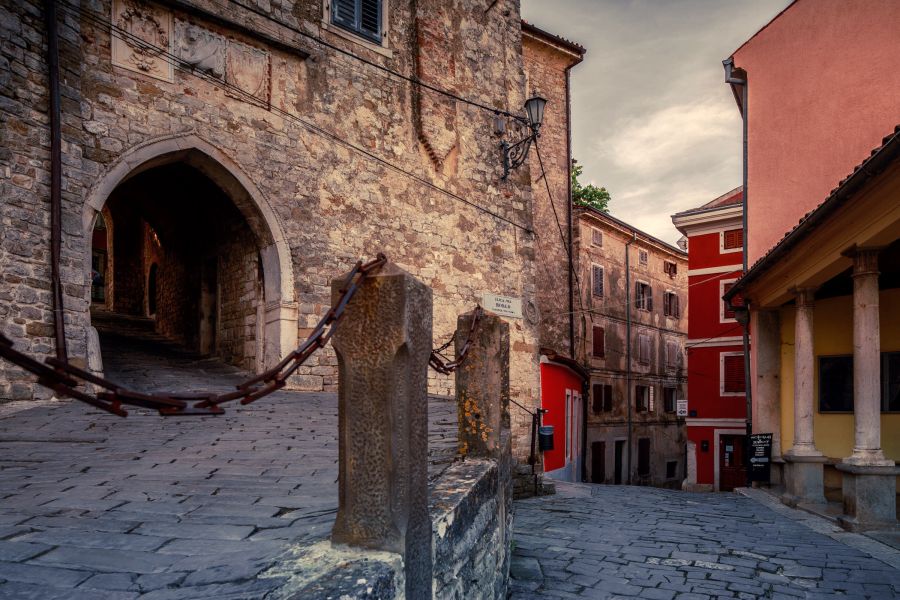
Motovun is filled with fantastic restaurants preparing all manner of Istrian specialties. Most of them are beautifully decorated so you won’t miss the breathtaking outdoor looks of this historic town.
Rain is also a great chance to head over to the local Cultural-Educational Centre Kaštel, where you can try freshly made bread and pasta. There, you can also attend a pasta-making workshop and find out about the old mill.
Additionally, Motovun is filled with old churches. St. Stephen Church, Motovun Belltower, Church of the Blessed Virgin Mary, Church of St.Anthony of Padua and St.Cyprian are just some worth exploring. Available for visit is 18th century noble Palace Polesini or Loggia on the Josef Ressel Square. This square was the place where the political rulers made their decision publicly known to citizens, a practice used as early as 1331. All these locations will ensure you stay dry. Meanwhile you will soak in cultural heritage and stories of old.
Porec
With the centre of Porec being over 2000 years old, there is much to explore even during rainy weather. Most notably, the stunning Euphrasian Basilica, registered on the list of UNESCO World Heritage in 1997. It was built in the 6th century during Bishop Euphrasius, whose name it carries. Euphrasian Basilica is famous for glittering mosaics from the 3rd century.
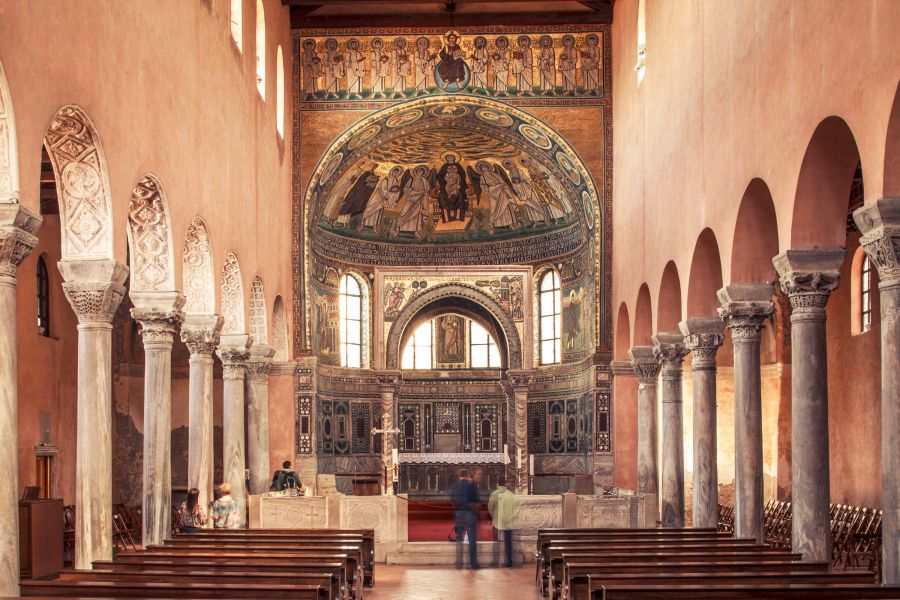
Another great site to visit is the Pentagonal Tower. It was erected in 1447 under the podesta Nicolò Lion on the foundations of an earlier medieval tower. There was na even older one in the same spot. All three layers of historical buildings are visible after a decision to show the structure layering in the late 20th century.
Its also worth having a look at the mid-13th century Romanesque House (and its Ethnographic Heritage Collection on its upper floors), as well as Canonica, the two oldest preserved houses in Porec.
Pula
When the rain starts falling on the historic Pula Roman Forum, seek shelter in the Temple of Augustus. The only survival of the three temples that stood around this central point, it is incredibly well preserved and exciting to see from the inside.
17th-century Venetian fortress with star-shaped defensive walls known as Fort Kastel is another stunning site in Pula. To see this fascinating structure, as our Pula TC page warns, you need to do a bit of heavy climbing. So, a chilly rainy day is a great option for making the trip up to Fort Kastel.
The most famous site in Pula, the Pula Colosseum built in the 1st century AD isn’t going to shelter you from the rain. But, the fact it is the most well-preserved colosseum outside of Italy means it is worth a little rain.
Rovinj
The bell tower of Saint Euphemia Church is the symbol of Rovinj. Apart from roof to shelter you from the rain, this church built in a mix of baroque and Venetian styles is rewarding for its beautiful interior with numerous altars and statues. The main altar is dedicated to the martyr Saint Euphemia, the patron saint of the city. The church also holds the sarcophagus of her relics dating from the year 800AD.
Rovinj is also the home of some truly lovely museums. Don’t miss a chance to visit the Batana House Eco Museum dedicated to the traditional wooden batàna vessel and the memory of the Rovinj community, which has chosen it as its symbol.
For more Rovinj history don’t miss the City Museum. It’s located in the Baroque palace of the counts of Califfi from the 17th and 18th century. The museum was established in 1954 at the initiative of Rovinj fine artists looking to store and protect the cultural wealth of the city. Along with regular museum exhibits, various themed exhibitons are being organised throughout the year.
Firstly operating as the Rovinj Film Club, the Batana Center of Visual Arts is in business since 1951. Today, the association of photographers of the Batana Center of Visual Arts organizes regular public events. They provide for an amazing visual art to help you get through a rainy day. These events range from performances and exhibitions to educational and promotional programs.
Eat & Drink Your Way around Istria
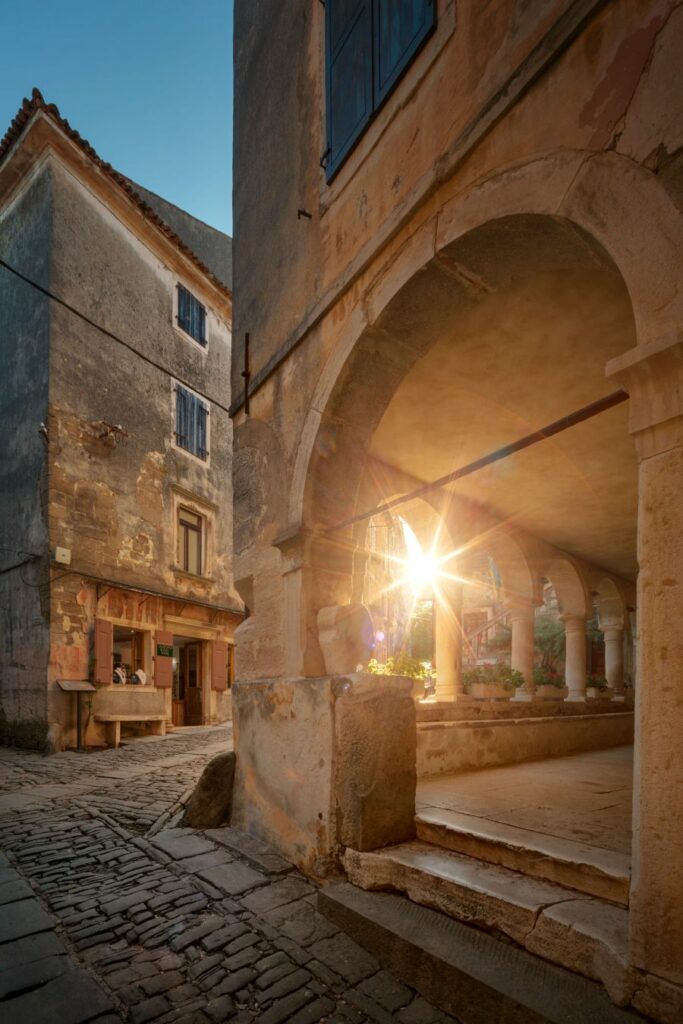
Aside from these amazing historical towns, Istrian Peninsula boasts amazing local food and wine. Many of the small towns and villages in the hinterland of Istria will house wineries and eateries waiting for you to discover them. Rainy day can be a great chance for yout to plan out a wonderful wine and food tour.
White wine variety Malvasia Istriana will be on everyone’s radar as it makes the most popular wines of the region. The food is authentic and local with plenty of Italian cultural influence. Needless to say, local pastas are amazing. The king of Istrian cuisine is the mighty truffle. Truffle aromas can be felt around many of the local restaurants making die hard fans of this funghi wishing they never leave.
All this and much more awaits anyone who wants to spend a day exploring the magical landscapes of Istria which are just as beautiful washed by the rain as they are bathed in sun.
More information
For more detailed information about all of these destinations, visit our dedicated pages for Dubrovnik, Split, Hvar, Jelsa, Pula, Porec, Motovun, Fazana, Rovinj, Rijeka or Zagreb
To follow the latest news from Croatia, don’t skip your daily dose of Total Croatia News

